
Don’t want your children to lose at the starting line, it seems to be the policy that every precious mother and father adhere to when raising their children.
Therefore, many parents have started the fanatical [buy buy Buy] mode from the first day of the baby’s arrival. What is good and what is expensive, so they buy what for the baby.
However, many baby-raising products on the market that look like [Gao Da Shang], instead of having the effect of publicity, will bring many unknown dangers to the baby.
Love children, more importantly, to ensure the safety of their growth.
Now, follow Ding Ma to reveal the [invisible killer] in these baby products.
Step 1 Set the pillow
Although there are many so-called stereotyped pillows on the market, they all advertise that they can help the baby fix the head shape or correct the head shape, but there is no evidence that stereotyped pillows can correct the baby’s partial head. Most partial head problems will gradually improve with the growth and development of the baby.
If you want to choose pillows for your baby, you must wait at least until your baby is 1 year old.
2. Crib Pads
Many parents are worried that the baby will sleep in the crib, his head will be injured by the railing, or his hands and feet will be stuck by the railing. They feel that a protective pad must be added to protect the baby.
In fact, the baby’s muscle strength is very weak, coordination ability is not so good, it is very difficult to hurt themselves. Moreover, qualified and safe crib, railing clearance should not exceed 6 cm, also does not have the problem of being stuck.
Most importantly, there is no evidence that protective pads can prevent children from being injured. Using protective pads will also increase the risk of suffocating or strangling children!
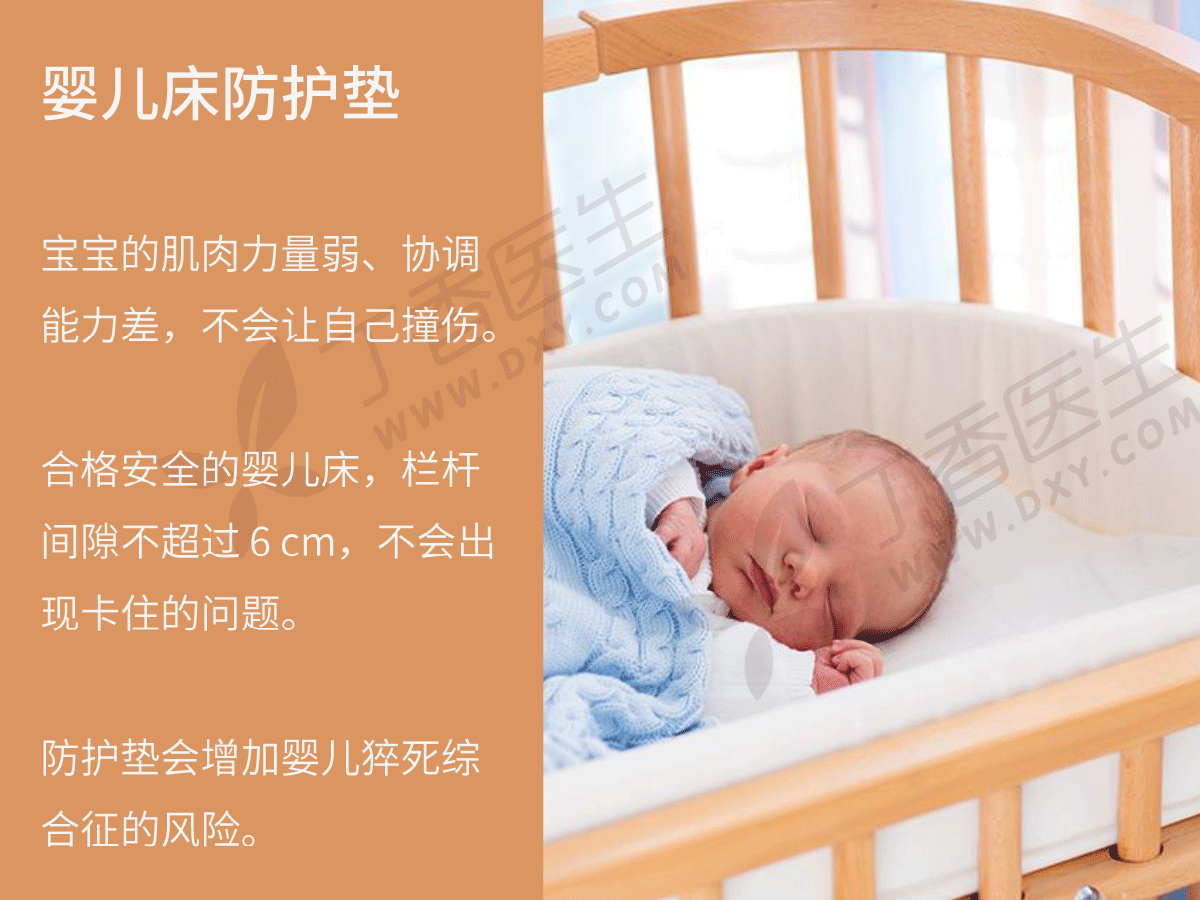
In order to reduce the combination of sudden infant death, the American Academy of Pediatrics (AAP) recommends that mothers and infants share the same room but have different beds. In cribs, care should also be taken not to use too soft items, including protective pads, blankets, plush toys, etc.
Step 3: Walker
Hearing the name walker, many parents may think it is a good thing, which can not only help the baby learn to walk quickly, but also save all kinds of troubles in the process of teaching the baby to walk.
Little imagine, this seemingly convenient and effective product will not only affect the baby’s learning to walk, but also bring greater safety threats to the child!
Babies who cannot walk yet have no ability to control the movement of the walker. The high speed brought by the wheel design of the walker will bring great risks to the baby.
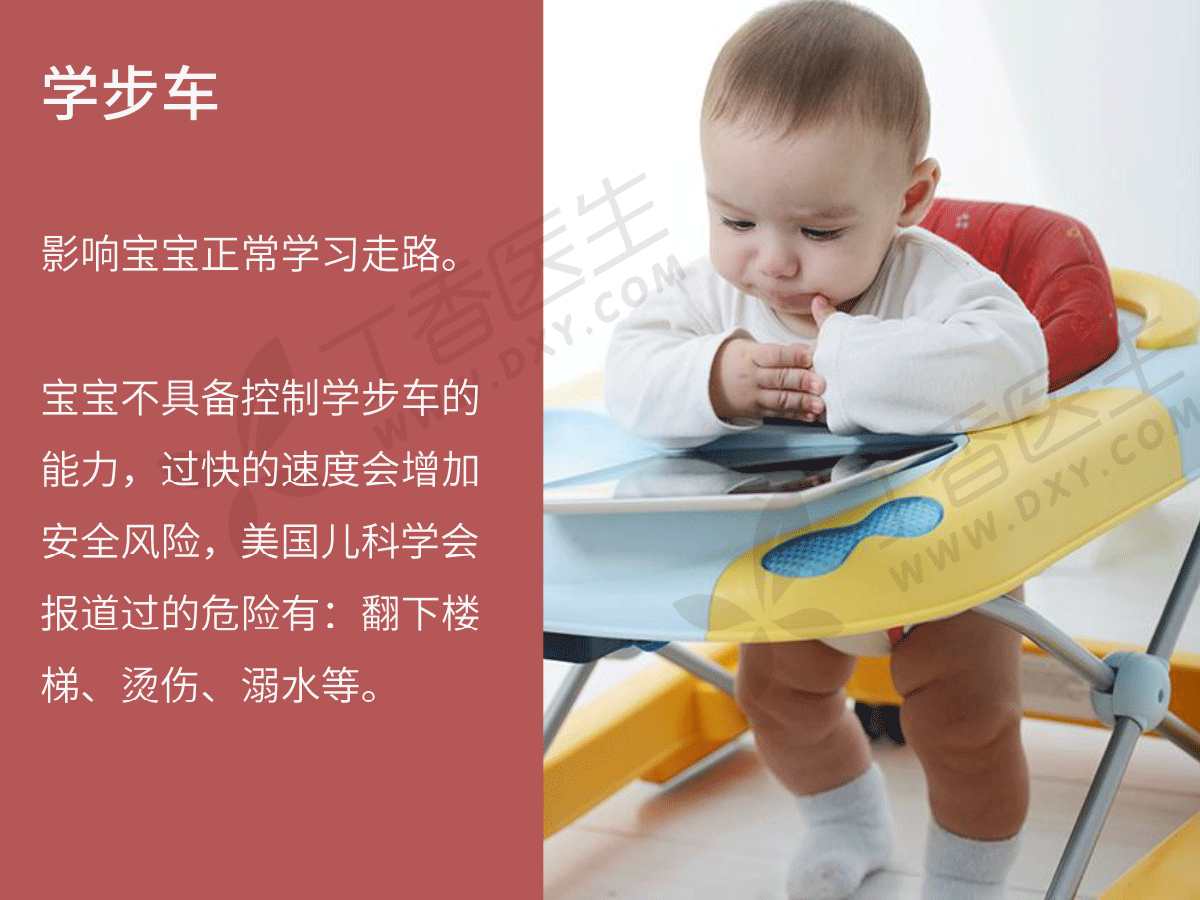
Learning to walk is a step-by-step process. As a parent, it only plays a role of guidance, help and protection, and must not be promoted.
Accompany the child more and give him encouragement in his constant attempts.
If parents really need a tool to help, they can choose a fixed fence for their children to sit, climb, stand and walk in.
4. Functional Shoes
When it comes to walking, another problem that parents are worried about comes again-how to help the baby choose the right shoes?
Now there is a kind of functional shoes on the market, the name sounds very [Gao Da Shang], is a high-tech product to help babies learn to walk?
In fact, this kind of functional shoes is more just a gimmick that merchants come up with in order to make money, and there is no production standard or inspection standard.
Moreover, babies who have just learned to walk do not need to wear shoes. Barefoot can stimulate the development of plantar nerves, which is conducive to exercising the baby’s toe grasping ability and helping the baby to establish a sense of balance. Even if the weather is relatively cool, it is enough to wear anti-skid socks indoors.
The soles of functional shoes are usually relatively hard and are not suitable for toddlers.
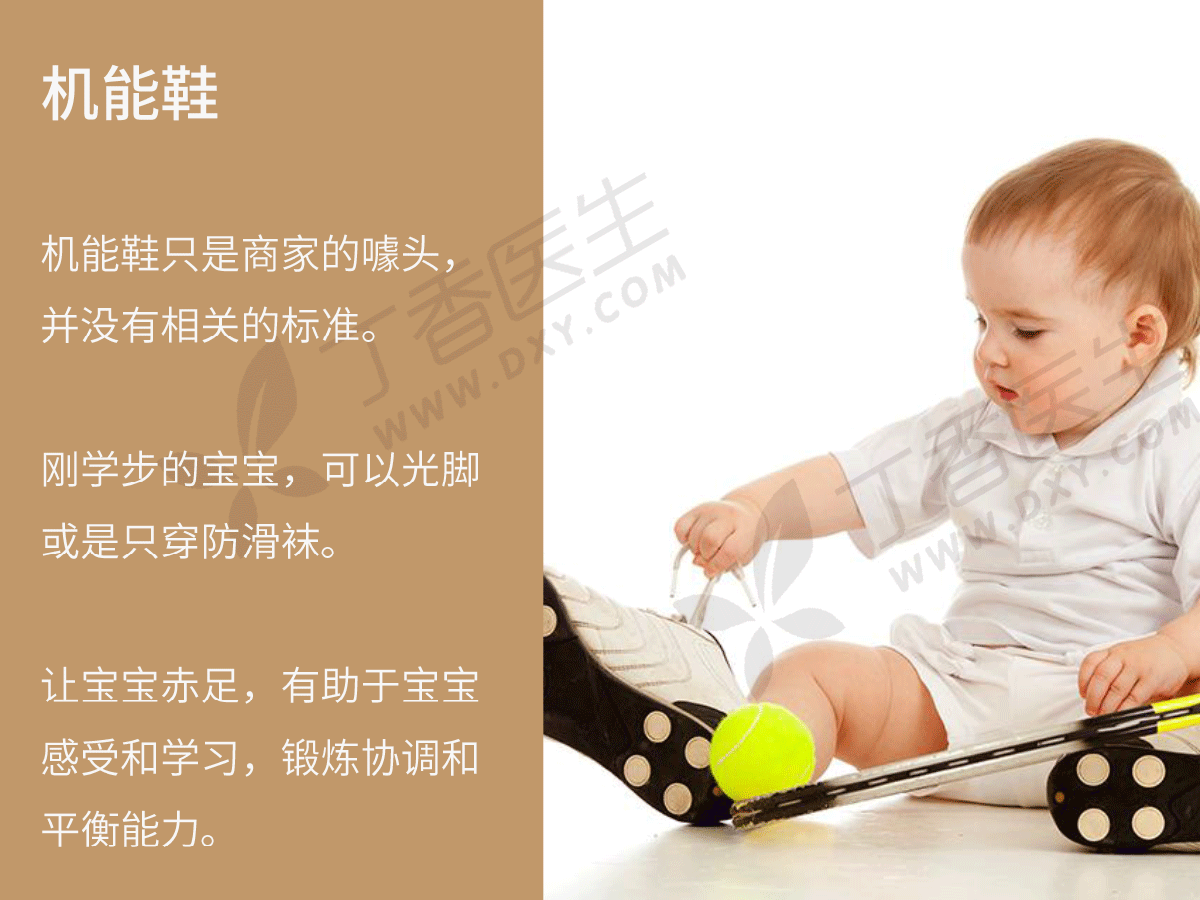
If it is in a relatively cold season, you can choose toddler shoes with soft soles and soft faces for your baby.
5. Swimming Neck Ring
I don’t know from what, parents began to be keen to let the baby wear swimming neck ring to learn swimming, saying that it can promote the baby’s development and stimulate the baby’s potential.
But can such a small baby really learn to swim? Can swimming neck ring protect the baby’s safety?
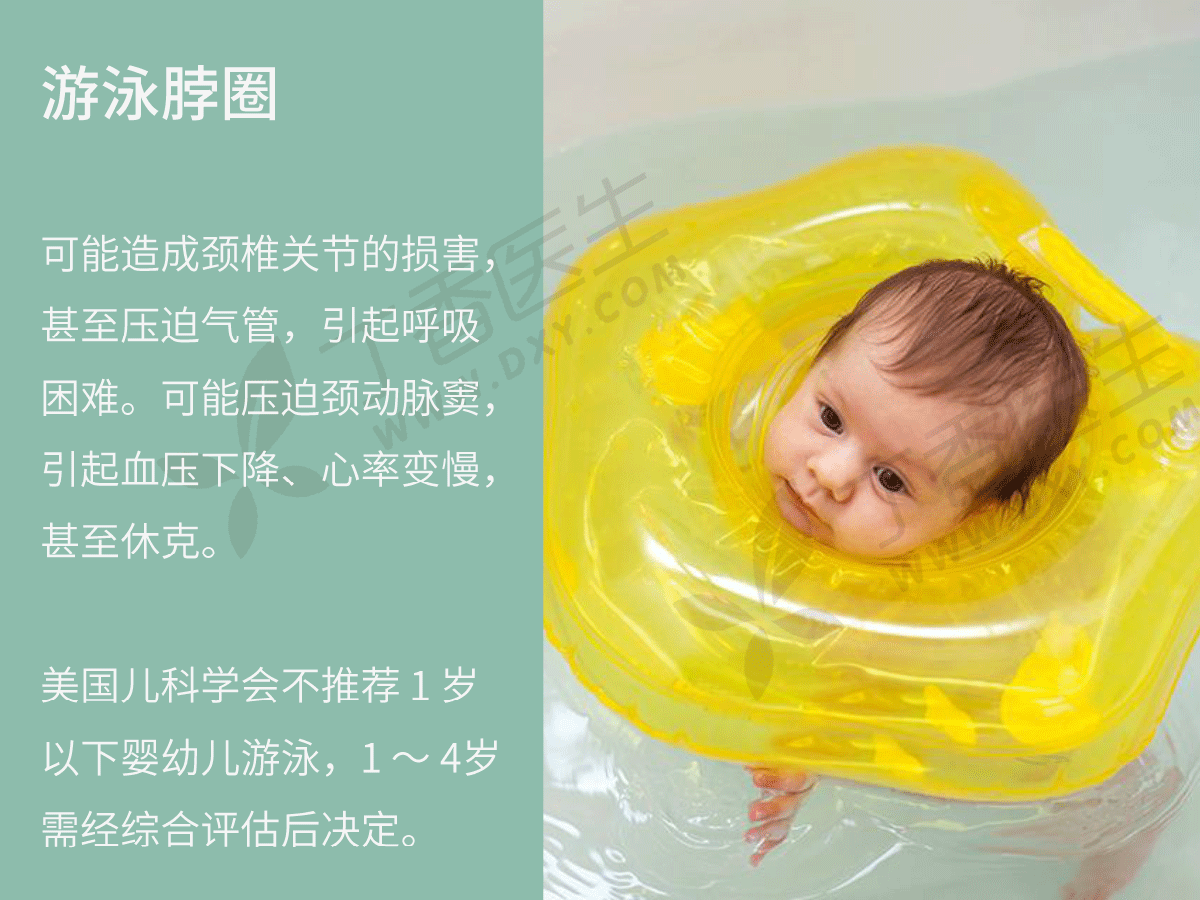
Infants under one year old cannot master the necessary swimming skills and ways to survive in the water, and are prone to drowning. Swimming neck rings not only cannot protect the baby, but also bring various damages to the baby’s body.
6. Hoodie
Many adults like to wear hoodies, but for children, hoodies are at risk of death.
After the pull rope on the hoodie is hooked by a moving object, it is easy to cause the child to be strangled.
Since June 1, the “Technical Specifications for Safety of Textile Products for Infants and Children” published by the National Standardization Administration Committee has been officially implemented, explicitly requiring that no rope belts are allowed on the head and neck of clothing for infants and children under 7 years old.
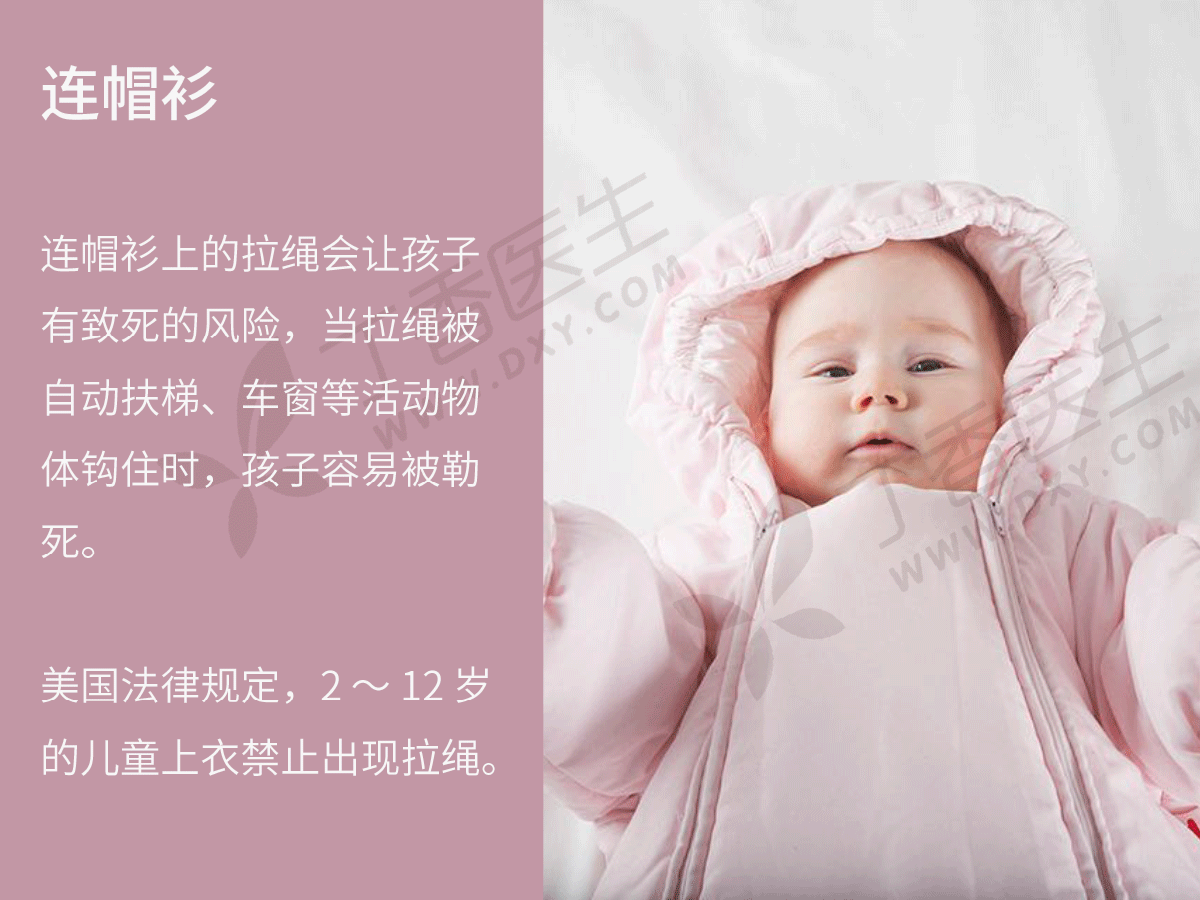
For children under the age of 14, try not to choose children’s clothing with drawstring. For clothes with drawstring, the drawstring should be completely removed before being worn by children. For children’s clothing waist belt, the middle part should be fixed.
In addition, children’s clothing with few ornaments and comfortable wear should be selected as far as possible, and pure cotton material with good air permeability should be selected as the material.
Step 7: Ten Drops of Water
The baby has prickly heat, which is one of the most worrying things for parents in summer. Rumor has it that adding ten drops of water to the bath water can prevent and treat prickly heat, and many parents said that the pro-test is effective.
But in fact, keeping cool and refreshing and taking frequent baths are the root causes of relieving the baby’s prickly heat, which has nothing to do with [ten drops of water], and some ingredients in [ten drops of water] will also hurt the baby.
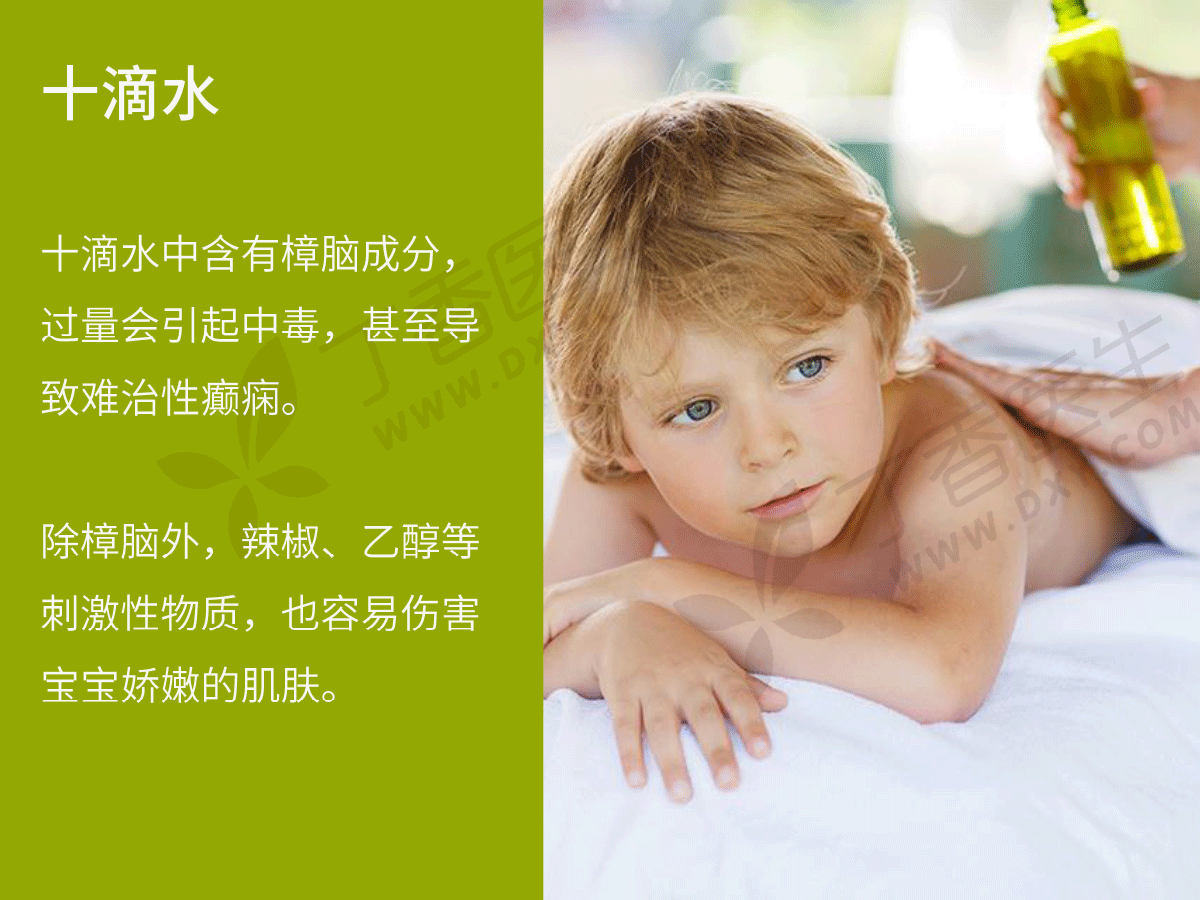
In addition to [ten drops of water], mint cream, essential balm, cooling oil and other products also contain camphor ingredients, which are also not recommended for babies.
If you also have these [Kengwa] baby products in your home, you may as well clean them up now.
Parents must keep their eyes open when purchasing infant products. They should not be fooled by the routine of merchants and turn their love for the baby into harm to the baby.
